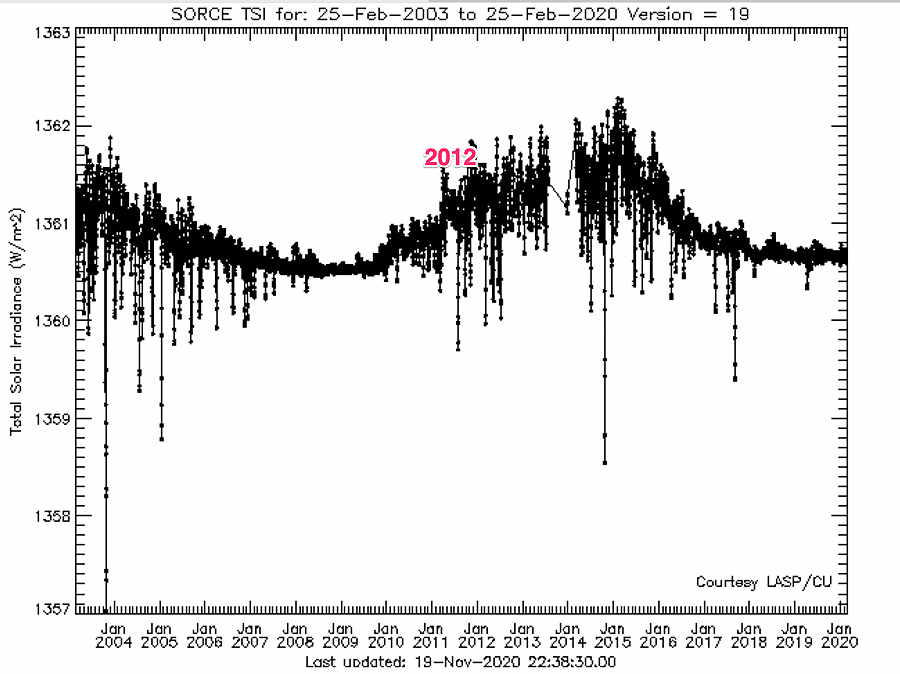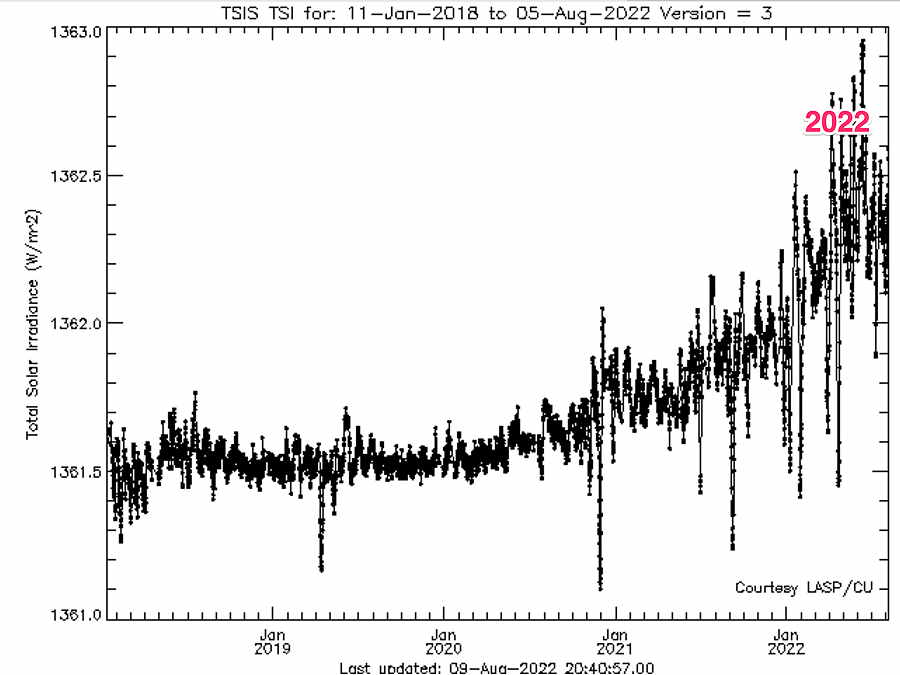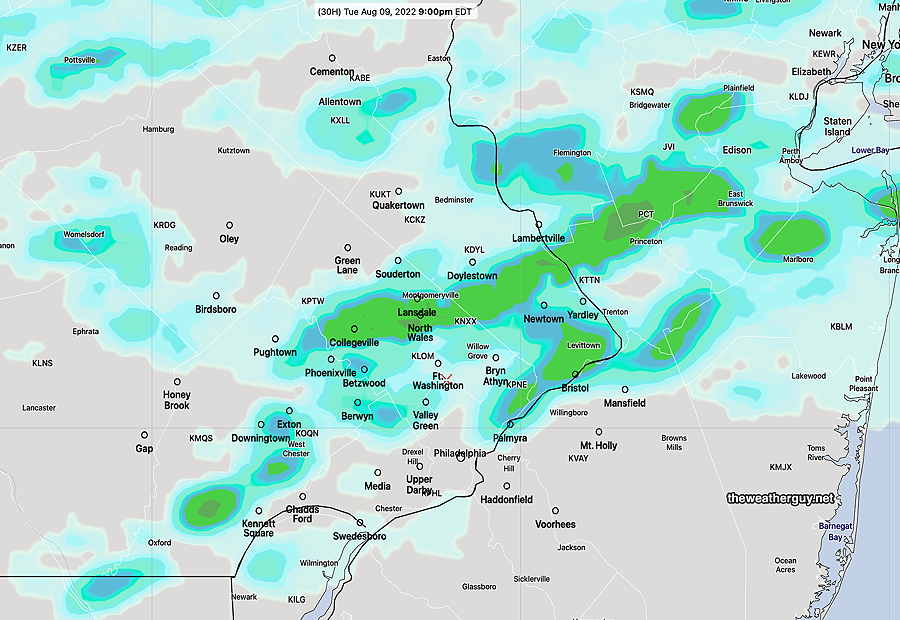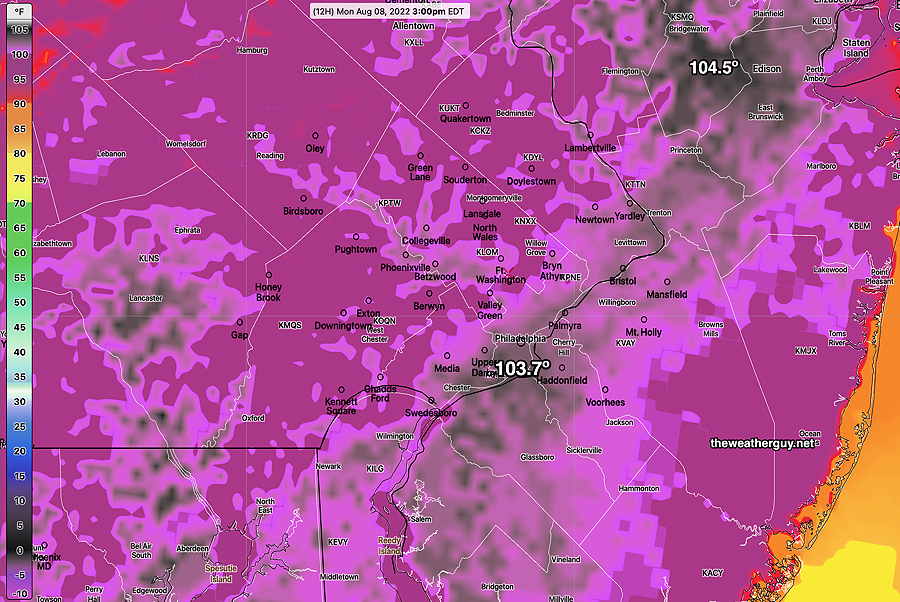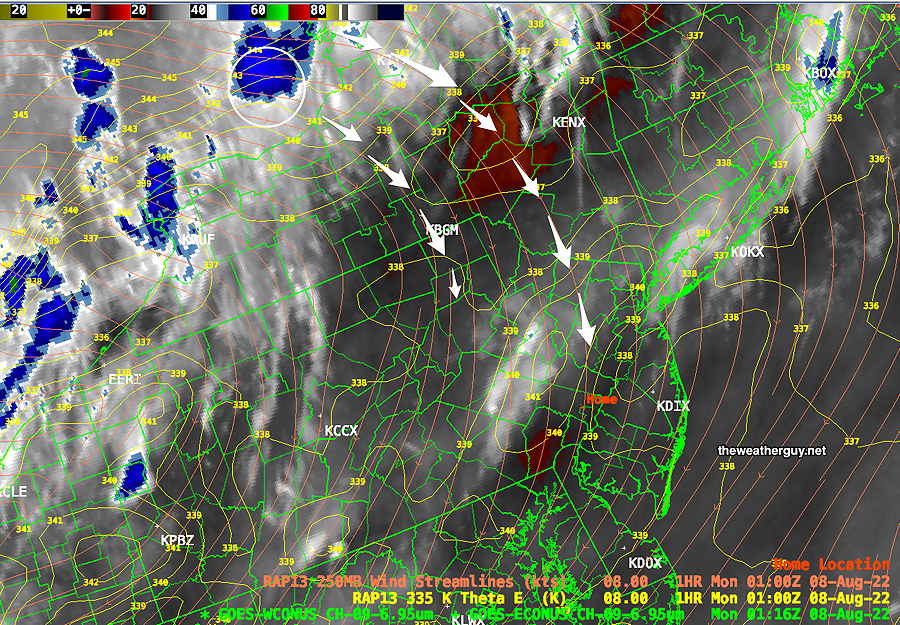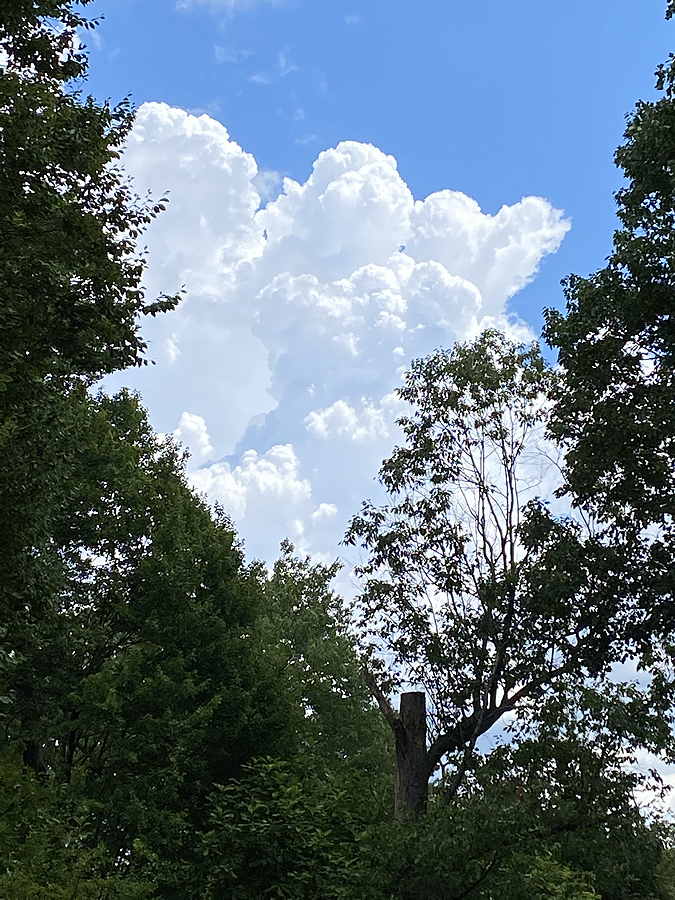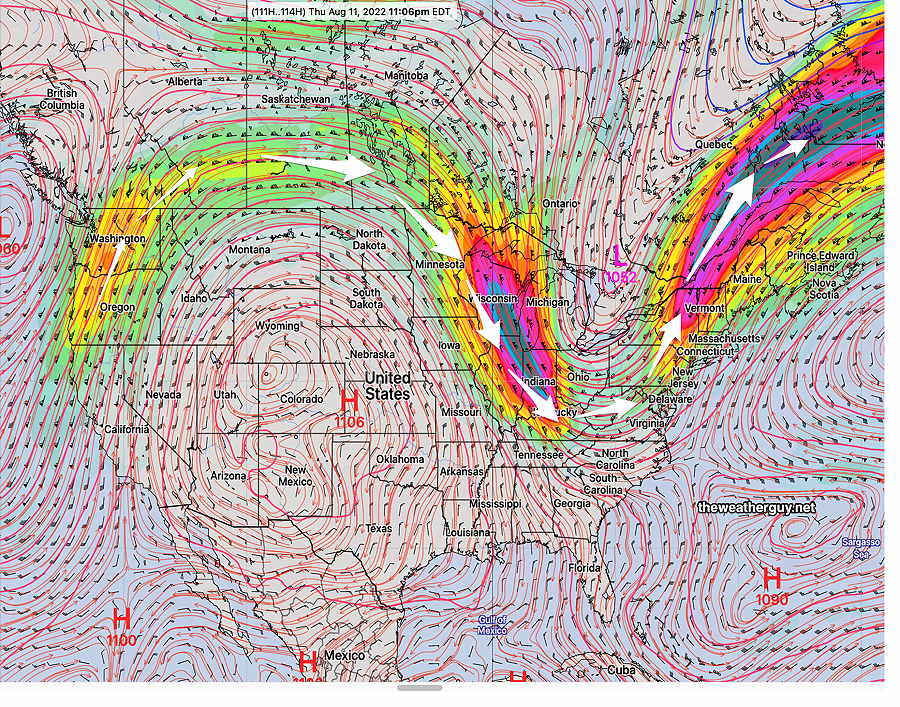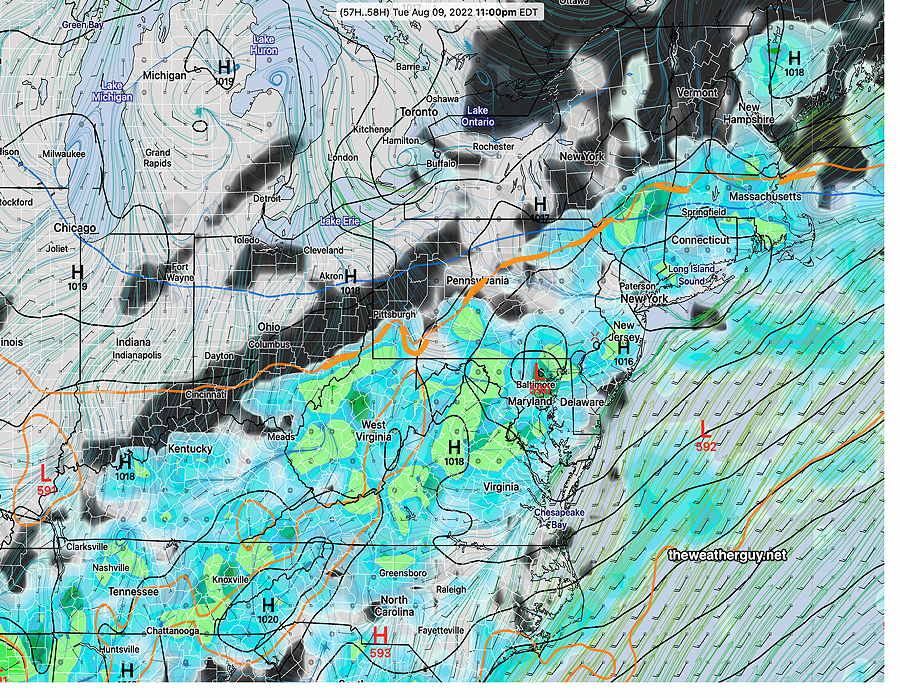Wednesday night’s rain
Update Thu 08/11 @ 9:24 AM — Areas, especially in NJ, had some decent amounts of rain Wednesday night—
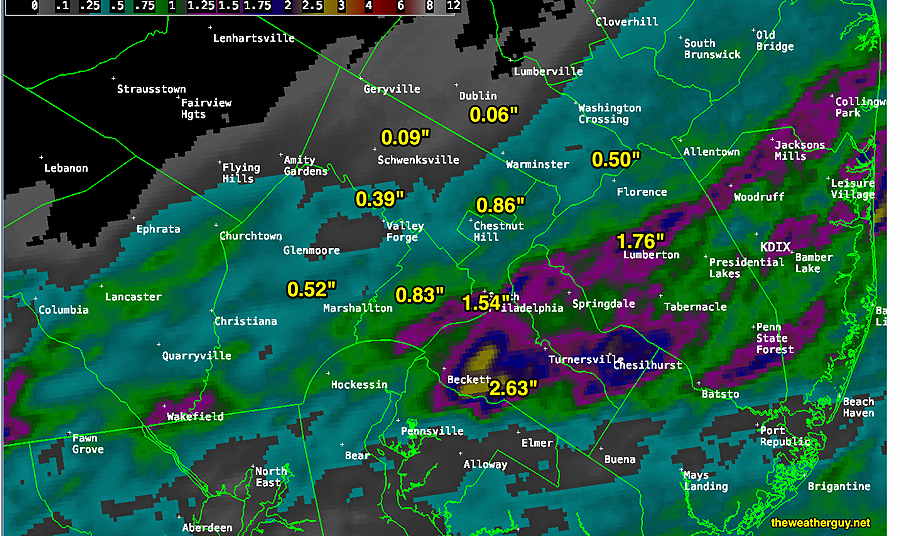
Show More
Compare the above actual rain amounts above to the forecast of the experimental LAMDAX model shown here. Not perfect, but not bad!! Better placement than the NAM-NEST. The experimental LAMDAX isn’t available every day, and when available, only web type low resolution graphics are released; no raw data is available outside of NOAA. Updated Wed 8/10 10:33 PM — Tonight’s models are showing considerably more rain tonight than previously forecast, in line with the experimental LAMDAX model. Many areas, but not all, may receive 0.4 to 0.8 inches. Every model shows a bullseye of localized heavy rain, but the location varies by model. Here’s the latest NAM-NEST, which is most extreme with its bullseye — Updated Wed 8/10 9:08 PM — Updated with the latest LAMDAX precip forecast which just became available below. Updated Wed 8/10 5:54 PM —Last night, while a very few areas received a substantial rainfall, most areas last night only received a paltry amount. Even the area around Citizens Bank Park only received about 0.30″ yet it caused two rain delays. Rainfall totals for last night (Tuesday evening/night), according to the MRMS— As for this evening (Wed), there’s lack of model agreement about where a low pressure system will develop along the stalled frontal boundary that moved through yesterday. This translates into a wide range or forecasts, most with rain south of the immediate PHL area. The consensus forecast based on the NBM— We already know this forecast will be off….the same models forecast rain already beginning in some areas right now, but nothing to be seen on radar and I see blue skies outside my window. Most of the rain will be gone by 8 AM, but a few areas may have some lingering showers, all gone by 10-11 AM, except in eastern NJ. Not a drought-buster. Just for the heck of it, here’s the latest experimental LAMDAX high resolution model forecast, showing a very different location of the heaviest precipitation . (The LAMDX looks like it’s being developed and groomed for the next generation of models, likely to be ready for operational release in 2024. It’s still experimental and not finalized.) — Updated Tue 8/09 8:37 PM — We did’t get a drop of rain. Maybe this time — Update Tue 08/09 @ 6:03 PM — I think we have the answer: the storms fell apart as they approached. My neck of the woods didn’t get a drop. I don’t need to change the headline title of this post which I have kept since Monday evening. Update Tue 08/09 @ 4:24 PM — Some storms have broken out to our west. The question (that will be answered soon): will they fall apart and diminish as they approach Philadelphia and New Jersey? The upper air pattern is working against storm formation with strong anticyclonic flow— This afternoon’s 18z HRRR shows minimal showers moving through between 7 and 9 PM— New Jersey has just issued a “drought watch”. We’re ‘watching’ here in Pennsylvania too! There’s talk about this is the first drought here in about 10 years. Any coincidence that we’re in a similar phase (increase) in the ~11 year sunspot cycle? I don’t think so. I have no idea about the precise mechanism causing drought conditions. BUT each solar maxima increases total solar irradiance reaching our planet by over 1 Watt/M2, which clearly must raise the temperature of the atmosphere. I’m conjecturing that an increase in upper atmosphere temperatures causes drought conditions. Superimpose that increase in temperature with climate change and the effect could be significant. The study of sunspot cycle and Total Solar Irradiance is performed by the TSIS satellite and previously by the SORCE satellite, operated by the Laboratory for Atmospheric and Space Physics. Here are summary plots showing the increase in irradiance for the past and current sunspot cycles— I went back through my old posts from 2012. I’ve been linking the sunspot cycle with dry conditions for 20 years. Updated Mon 8/08 10:55 PM — Tonight’s high resolution models are showing the possibility of tomorrow’s showers being an even greater disappointment. Many areas may receive little or no rain. Update Mon 08/08 @ 8:03 PM — Our severe heat wave will end tomorrow evening as a cold front moves slowly through. Despite high CAPE values and high precipitable water values, the models are cranking out only scattered showers and thunderstorms. Total rainfall for most areas will be in the paltry 0.2-0.4″ range. Some areas will have less and a few up to 0.75″ in our area. I offered an explanation for the lack of rainfall earlier in this post. NBM forecast rainfall— There’s a range for the onset of the showers: as early as 4-5 PM, but with most of the activity between 7 PM and 11 PM. We may receive some additional rainfall Wednesday evening with a secondary cold front. Update Mon 08/08 @ 8:36 AM — Monday’s weather will be notable for the much higher dew points (70º-75ª) than the high temperatures (92-94º). The max heat index (maximum “apparent temperature”) according to the NBM at 3 PM — Most models keep any pop-up thunderstorms to our far northwest today. But with the increase in humidity, a pop-up thunderstorm in our area can’t be ruled out. There is a large upper air disturbance that will rotate through our area, visible on water vapor imagery — Yesterday, storms tried to develop but failed— Previously Posted Sun 8:19 PM — The current heat wave continues through Tuesday afternoon. Little relief from dry conditions. A change is on the way Thursday —A significant dip in the jet stream on Thursday will result from high pressure building in to the eastern third of the country— Before we get to Thursday, we have to deal with a complex situation late Tuesday and Wednesday. Between Tuesday evening and Thursday a cold front will struggle to move through. Ordinarily, we’d expect heavy thunderstorms and heavy rain (much needed!) with a cold front moving into very warm humid air. And I wish I could be confident that the immediate Philadelphia area will receive that heavy rain we need. But the GFS shows a complex frontal passage with the upper air ridge hanging tight on Tuesday night with the front stalling— The front makes another move through Wednesday night with more showers and thunderstorms Wednesday afternoon and evening. Zooming in on 8 PM Wednesday night, that pesky 576 thickness line hangs back after the front moves through and and the immediate PHL area appears to get short-changed in the rain department. Next Thursday through Sunday look great. But if you’re hoping for relief from lawn watering, I’m afraid it may not happen. Should surface low pressure develop in a slightly different position, things might change. I’ll keep an eye on it.
Rain Wednesday night into Thursday morning
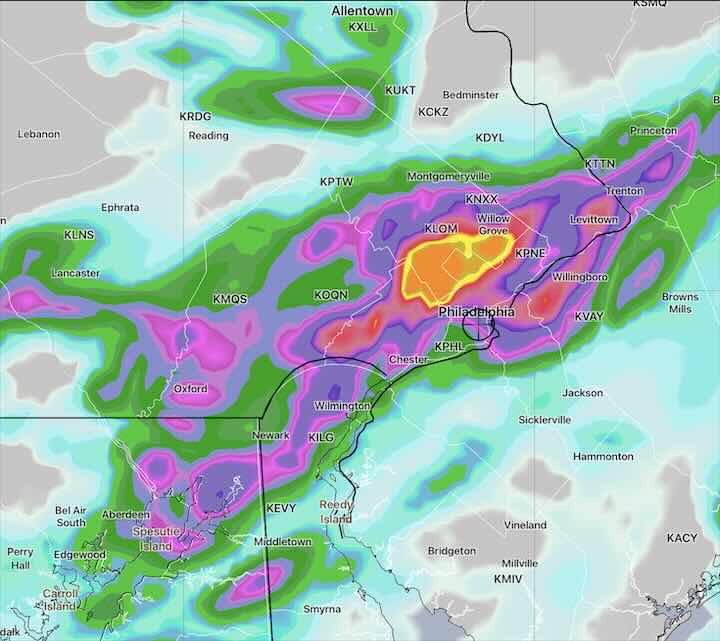
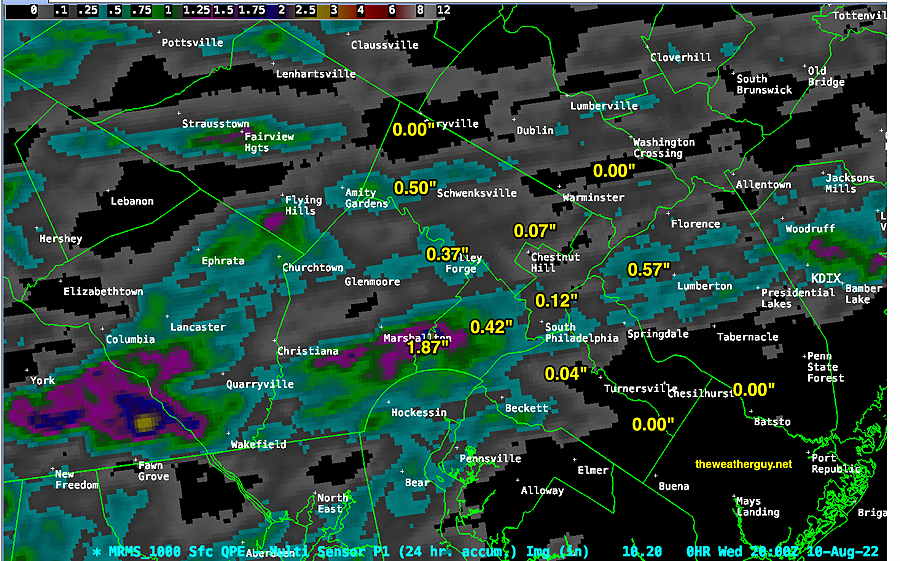
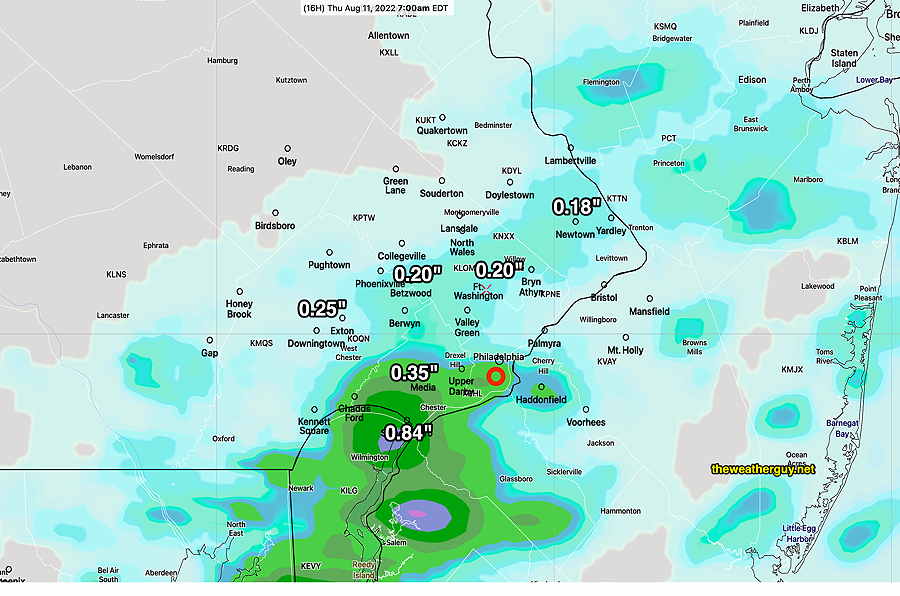
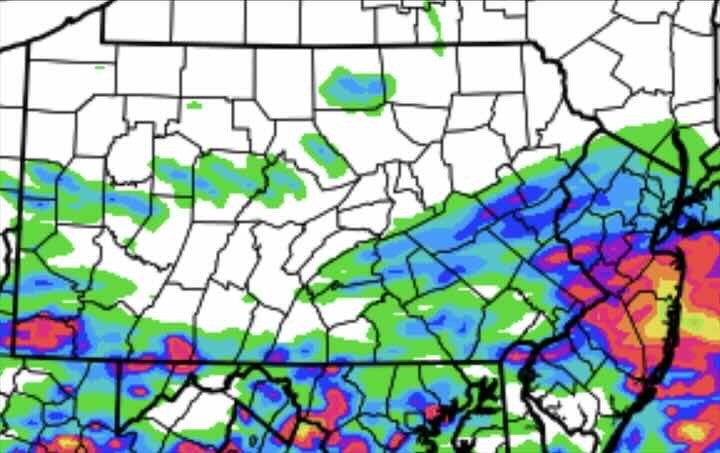
Paltry rainfall for Tuesday evening
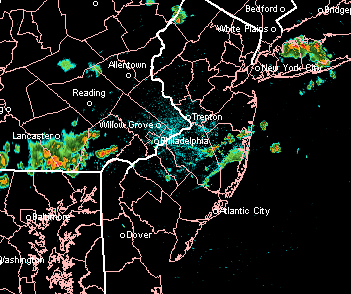
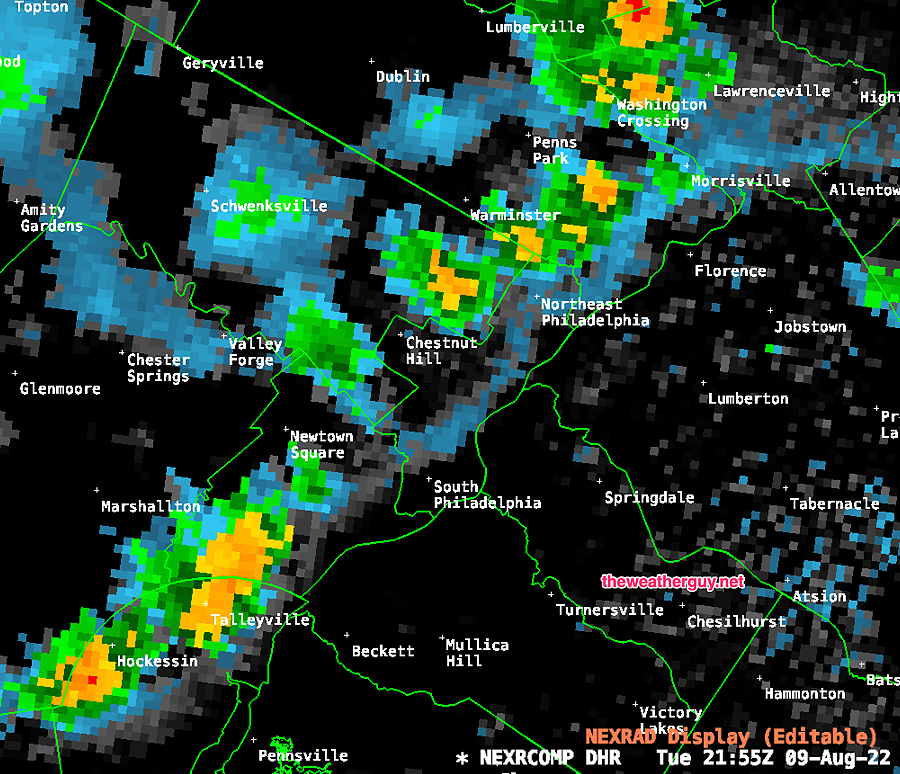

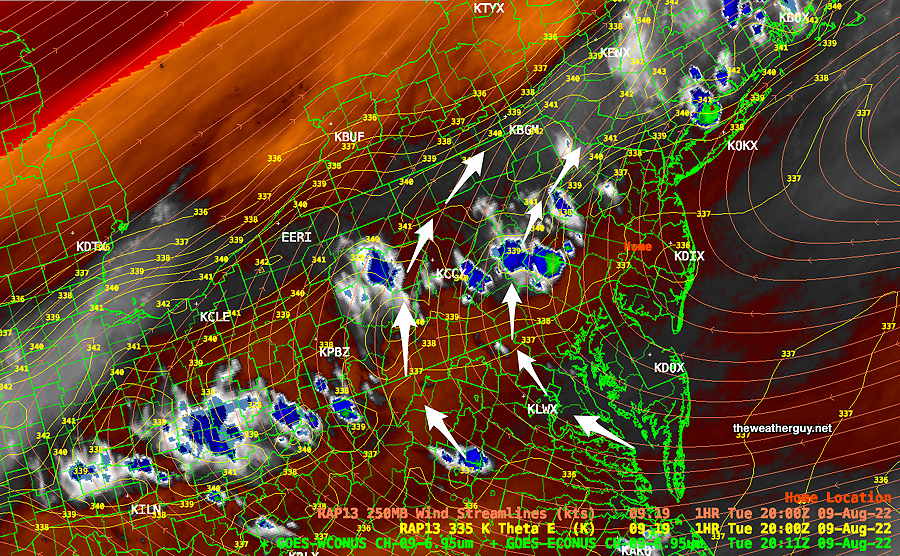
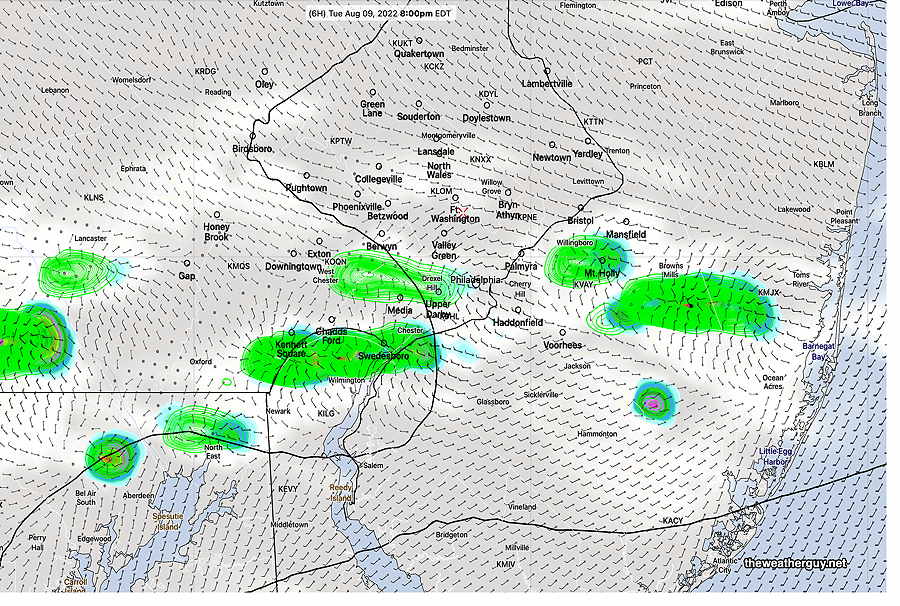
A Drought?
